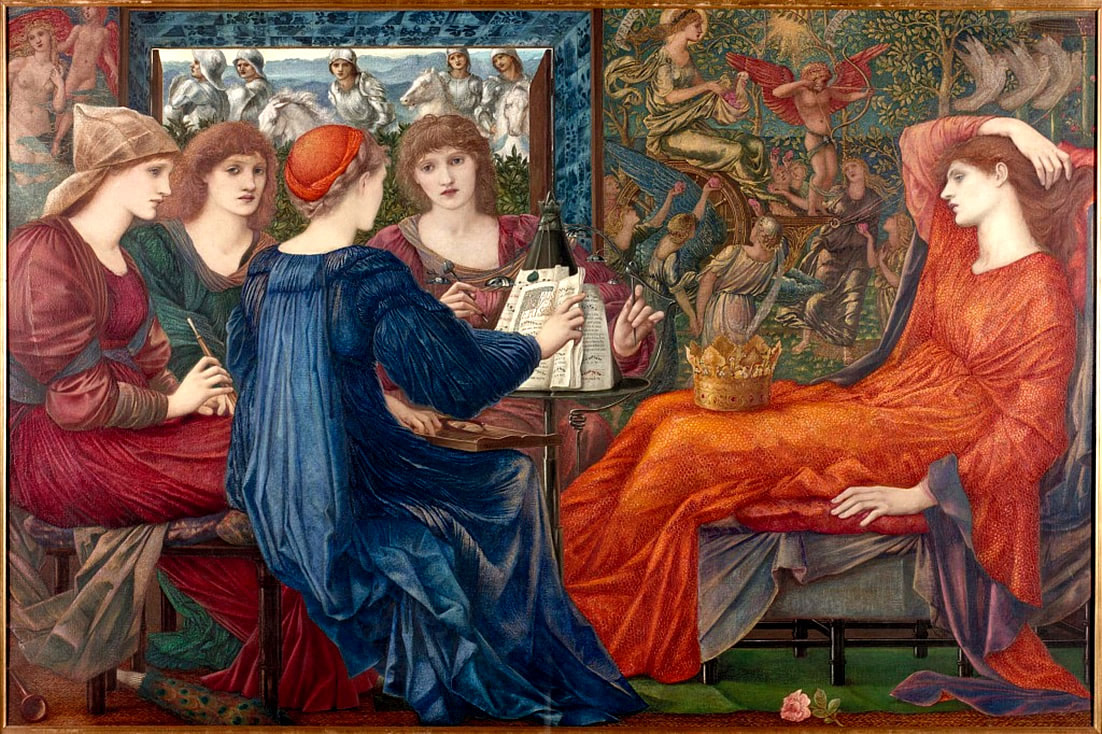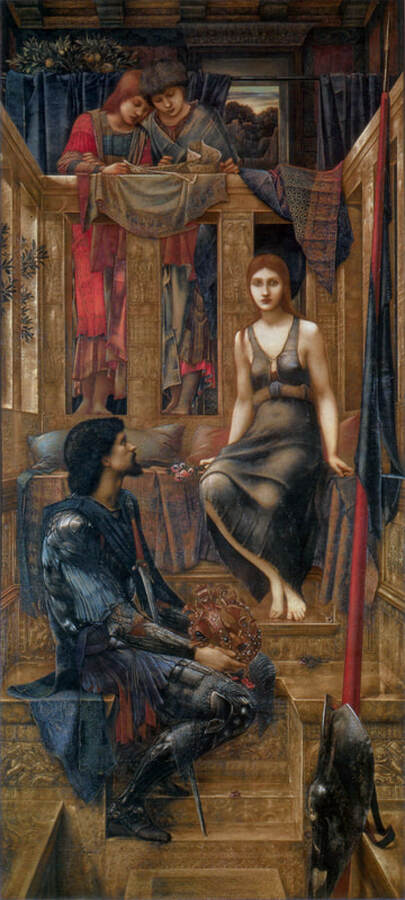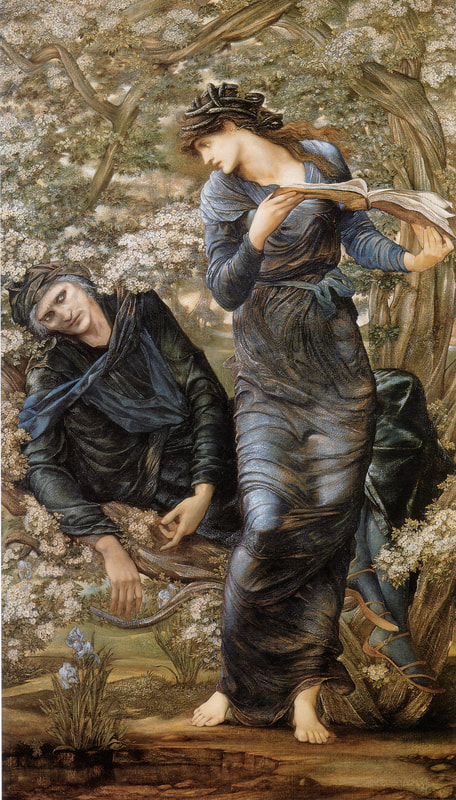English Medievalisms
In 1857 the Oxford Union, a generously-endowed student debating society, completed work on what was to become one of the most beautiful libraries in the world. The (in)famous media personality Dante Gabriel Rossetti was hired to paint a series of murals on the library's walls and, distracted by a number of other projects, he brought in two younger friends to assist: William Morris and Edward Burne-Jones.
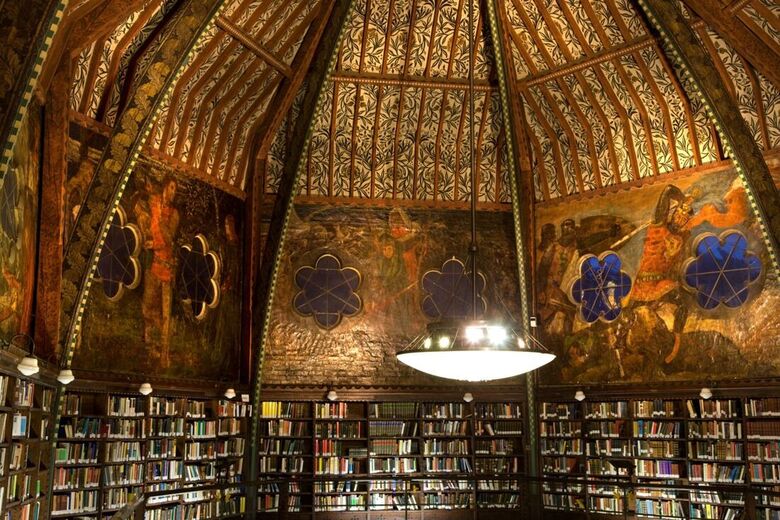
The Oxford Union Library today. The murals have faded badly; at this point in their careers, Morris and Burne Jones were beginners. They were only 23, after all...
Working together, the three formed a bond that initiated the 2nd manifestation of the old Pre-Raphaelite movement. More political, more enmeshed with the world of commerce, often stranger and more extreme than the first generation, these three artist-writers had an enduring influence on the way we perceive later Victorian culture.
Ned Burne-Jones' lush Laus Veneris, the title of a poem by Swinburne.
Morris and Burne-Jones really took the "pre" in Pre-Raphaelitism seriously. Like many Victorians, their imaginations are drawn to an idealized Medieval era.
It's no accident that many of the women depicted in the medieval visions of Burne-Jones are reminiscent of those who show up in Rossetti's later paintings: strange-jawed, massy-haired, contemplative expressions: they often used the same models.
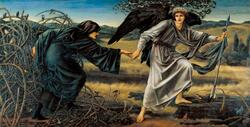
EBJ: Love and the Pilgrim
Each of these Pre-Raphaelite women were fascinating personalities in their own right, who deserve to have their own stories told: Lizzie Siddal, Jane Morris, Fanny Cornforth, Effie Gray: Read about them each here.
